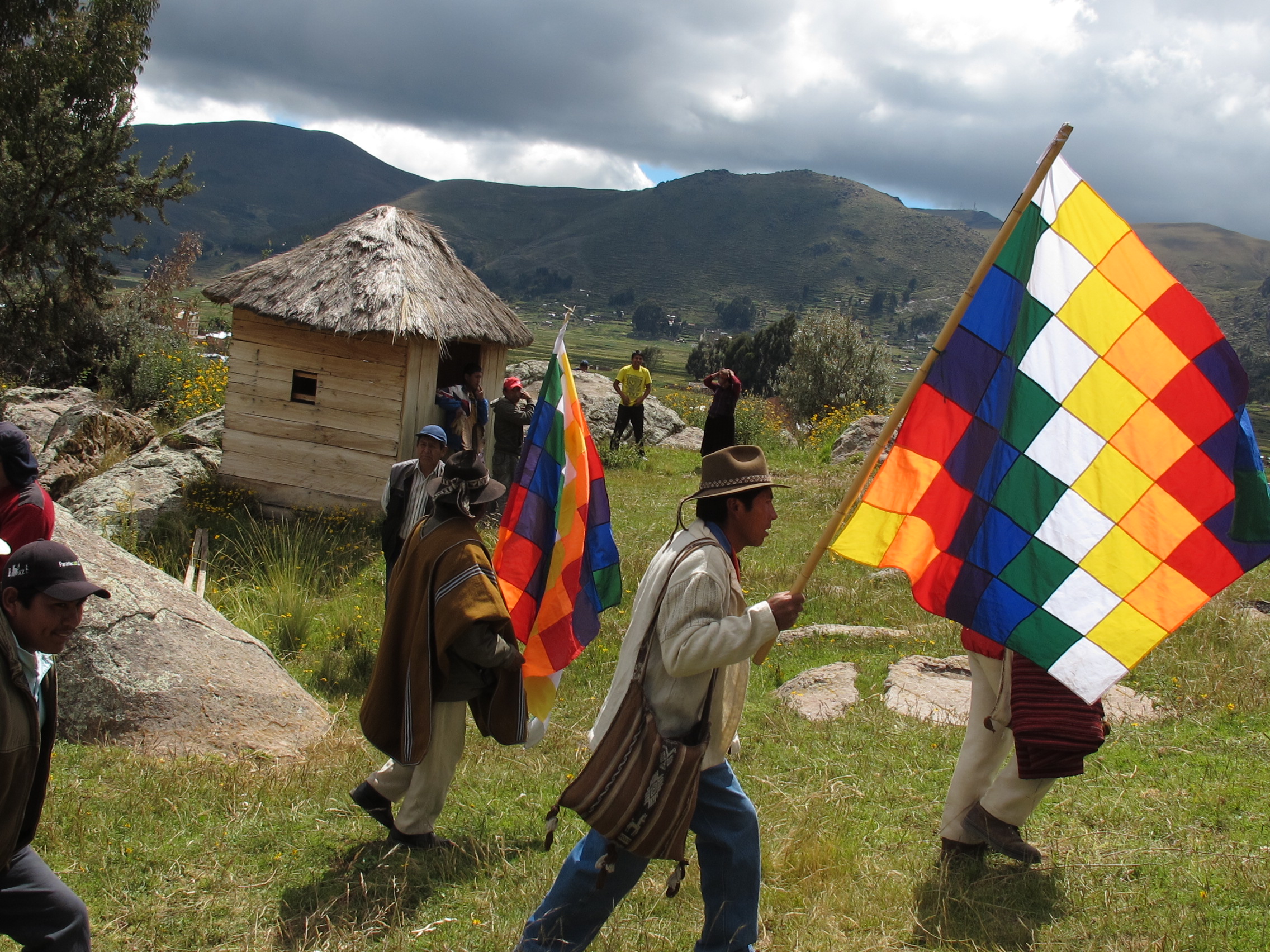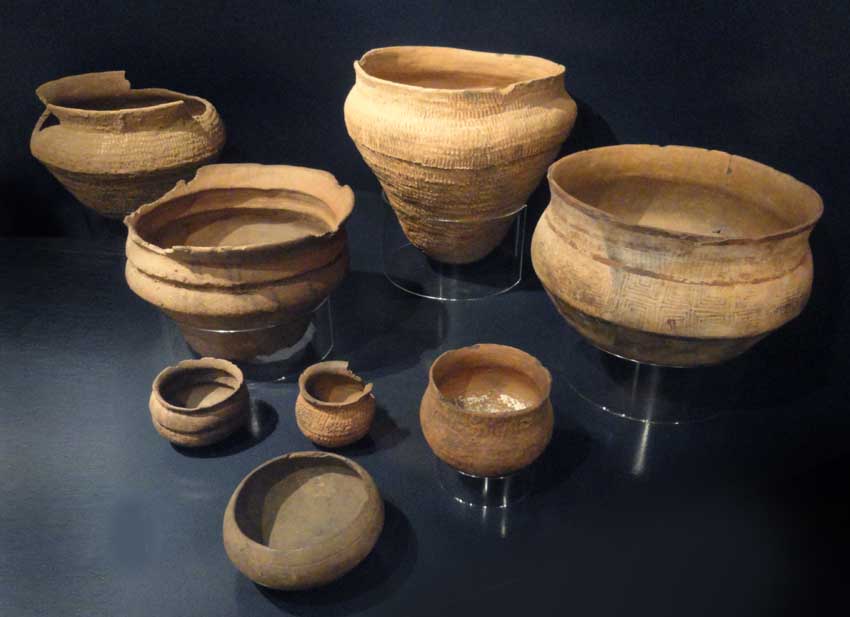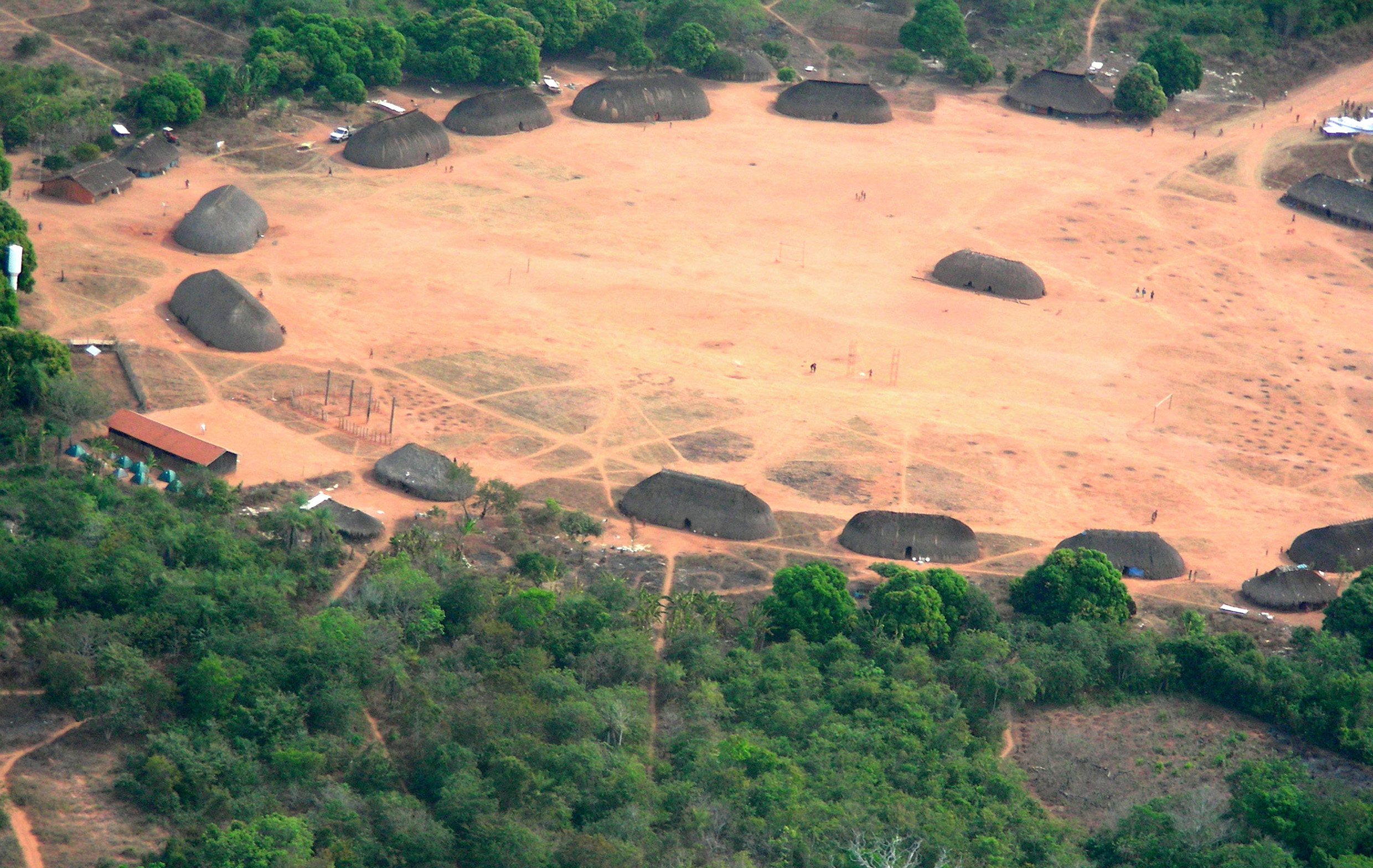|
Pauserna
The Pauserna are an indigenous people in Bolivia and Brazil who live along the upper Río Guaporé. Most of them live in the southeastern part of the department of Beni, in Bolivia. The people derive their name from the fact that the pao cerne tree is abundant in their area. Only a few of the older people speak the Pauserna language, which is closely related to Guaraní and is a member of the Tupí language family. History Most likely the Pauserna migrated to Bolivia from Paraguay centuries before when the Guaraní attacked the frontiers of the Incan empire. The Pauserna's ancestors are believed to be the Guaraní. Guarayos and Pauserna once made up a single group; one part of that group, the ancestors of the Guarayu, was moved into missions, and the other part remained independent and is known as the Pauserna. Their first significant contact with outside people came in the 1880s, when rubber tappers came to the area. When Erland Nordenskiöld visited them during his expeditio ... [...More Info...] [...Related Items...] OR: [Wikipedia] [Google] [Baidu] |
Pauserna Language
The Pauserna are an indigenous people in Bolivia and Brazil who live along the upper Río Guaporé. Most of them live in the southeastern part of the department of Beni, in Bolivia. The people derive their name from the fact that the pao cerne tree is abundant in their area. Only a few of the older people speak the Pauserna language, which is closely related to Guaraní and is a member of the Tupí language family. History Most likely the Pauserna migrated to Bolivia from Paraguay centuries before when the Guaraní attacked the frontiers of the Incan empire. The Pauserna's ancestors are believed to be the Guaraní. Guarayos and Pauserna once made up a single group; one part of that group, the ancestors of the Guarayu, was moved into missions, and the other part remained independent and is known as the Pauserna. Their first significant contact with outside people came in the 1880s, when rubber tappers came to the area. When Erland Nordenskiöld visited them during his expeditio ... [...More Info...] [...Related Items...] OR: [Wikipedia] [Google] [Baidu] |
Warázu Language
Warázu, also known as Pauserna or Guarasugwé (Guarasú'we), is a moribund Tupi–Guaraní language of Brazil. It was also formerly spoken in Bolivia. It is spoken by the Guarasugwé people, who were estimated to number 125 according to a census in 2012. Classification Warázu is most closely related to Sirionó and Yuki (Yuqui). Ramirez (2017) places the classification of Warázu in the Guaraní subgroup of the Tupi-Guarani languages as follows: *Guaraní subgroup ** Guaraní ** Tupinambá **Guarayu **Warázu-Sirionoid ***Sirionoid (Sirionó, Yuqui, etc.) ***Warázu Names Speakers are also known as Guaraiutá, Guaraju, Pauserna, Guarasugwe, or Warazúkwe aɾaðúkwe Demographics Ramirez (2017) found only 2 remaining speakers of Warázu, an elderly couple consisting of Känä́tsɨ ənə́tsɨ(José Frei Leite) and Híwa (Ernestina Moreno). They were born in Riozinho (Urukuríti) in Rondônia, Brazil, and moved back and forth between Brazil and Bolivia until finally se ... [...More Info...] [...Related Items...] OR: [Wikipedia] [Google] [Baidu] |
Indigenous Peoples In Bolivia
Indigenous peoples in Bolivia, or Native Bolivians, are Bolivian people who are of indigenous ancestry. They constitute anywhere from 40 to 70% of Bolivia's population of 11,306,341, depending on different estimates, and belong to 36 recognized ethnic groups. Aymara and Quechua are the largest groups."Indigenous peoples in Bolivia." ''International Work Group for Indigenous Affairs.'' Retrieved 2 Dec 2013. The geography of Bolivia includes the , the , and the |
Guarayos
The Guarayos are an indigenous group living in their ancestral land in eastern Bolivia. They are located north of the department of Santa Cruz. The current population of the Guarayo group in Bolivia is 12,000. They primarily speak Guarayu, and 70% of the population is Roman Catholic with the remaining 30% practicing ethnic religions. Guarayu comes from the language of Guaraní as it belongs in the Tupí Family. They are known to be predominantly agricultural as much of their culture and lifestyle relies on their land. History Most likely Guarayos migrated to Bolivia from Paraguay centuries before when the Guaraní attacked the frontiers of the Incan empire. Guarayos ancestors are believed to be the Guaraní. Guarayos and Pauserna once made up a single group; one part of that group, the ancestors of the Guarayos, was moved into missions, and the other part remained independent and is known as Pauserna. They were contacted and grouped in the beginning of the 1880s where they ... [...More Info...] [...Related Items...] OR: [Wikipedia] [Google] [Baidu] |
Bolivia
, image_flag = Bandera de Bolivia (Estado).svg , flag_alt = Horizontal tricolor (red, yellow, and green from top to bottom) with the coat of arms of Bolivia in the center , flag_alt2 = 7 × 7 square patchwork with the (top left to bottom right) diagonals forming colored stripes (green, blue, purple, red, orange, yellow, white, green, blue, purple, red, orange, yellow, from top right to bottom left) , other_symbol = , other_symbol_type = Dual flag: , image_coat = Escudo de Bolivia.svg , national_anthem = " National Anthem of Bolivia" , image_map = BOL orthographic.svg , map_width = 220px , alt_map = , image_map2 = , alt_map2 = , map_caption = , capital = La Paz Sucre , largest_city = , official_languages = Spanish , languages_type = Co-official languages , languages ... [...More Info...] [...Related Items...] OR: [Wikipedia] [Google] [Baidu] |
Ethnic Groups In Bolivia
Bolivians ( es, Bolivianos) are people identified with the country of Bolivia. This connection may be residential, legal, historical or cultural. For most Bolivians, several (or all) of these connections exist and are collectively the source of their being Bolivian. Bolivia is, as its neighboring countries, a multiethnic and multilingual society, home to people of various ethnic, religious, and national origins, with the majority of the population made up of indigenous and Old World immigrants and their descendants. As a result, Bolivians do not equate their nationality with ethnicity, but with citizenship and allegiance to Bolivia. Aside from the indigenous populations, Bolivians trace their ancestry to the Old World, primarily Europe and Africa, ever since the Spanish conquest of South America and founding of first Spanish settlements in the Viceroyalty of the Río de la Plata. Modern Bolivian population, estimated at 11 million is formally broken down into Amerindia ... [...More Info...] [...Related Items...] OR: [Wikipedia] [Google] [Baidu] |
Guaraní People
Guarani are a group of culturally-related indigenous peoples of South America. They are distinguished from the related Tupi people, Tupi by their use of the Guarani language. The traditional range of the Guarani people is in present-day Paraguay between the Paraná River and lower Paraguay River, the Misiones Province, Misiones Province of Argentina, southern Brazil once as far east as Rio de Janeiro, and parts of Uruguay and Bolivia. Although their demographic dominance of the region has been reduced by European colonization of the Americas, European colonisation and the commensurate rise of mestizos, there are contemporary Guarani populations in these areas. Most notably, the Guarani language, still widely spoken across traditional Guarani homelands, is one of the two official languages in Paraguay, the other one being Spanish language, Spanish. The language was once looked down upon by the upper and middle classes, but it is now often regarded with pride and serves as a symbol o ... [...More Info...] [...Related Items...] OR: [Wikipedia] [Google] [Baidu] |
Indigenous Peoples In Brazil
Indigenous peoples in Brazil ( pt, povos indígenas no Brasil) or Indigenous Brazilians ( pt, indígenas brasileiros, links=no) once comprised an estimated 2000 tribes and nations inhabiting what is now the country of Brazil, before European contact around 1500. Christopher Columbus thought he had reached the East Indies, but Portuguese Vasco da Gama had already reached India via the Indian Ocean route, when Brazil was colonized by Portugal. Nevertheless, the word ("Indians") was by then established to designate the people of the New World and continues to be used in the Portuguese language to designate these people, while a person from India is called in order to distinguish the two. At the time of European contact, some of the Indigenous people were traditionally semi-nomadic tribes who subsisted on hunting, fishing, gathering and migrant agriculture. Many tribes suffered extinction as a consequence of the European settlement and many were assimilated into the Brazilian po ... [...More Info...] [...Related Items...] OR: [Wikipedia] [Google] [Baidu] |
Ethnic Groups In Brazil
Brazilian society is made up of a confluence of people of several different origins, from the original Native Brazilians, with the influence of Portuguese colonists and people of African descent. Other major significant groups include Italians, Spaniards, Germans, Lebanese and Japanese. Latin Europe accounted for four-fifths of the arrivals (1.8 million Portuguese, 1.5 million Italians, and 700,000 Spaniards). Brazil has seen greater racial equality over time. According to a recent review study, "There has been major, albeit uneven, progress in these terms since slavery, which has unfortunately not wholly translated into equality of income: only in 2011 did the black-to-white income ratio eclipse its 1960 level, although it appears to be at an all-time high. Education and migration were important factors in closing the gap, whereas school quality and discrimination may explain its persistence." Historic background The Brazilian population was formed by the influx of Po ... [...More Info...] [...Related Items...] OR: [Wikipedia] [Google] [Baidu] |
Neolocal Residence
Neolocal residence is a type of post-marital residence in which a newly married couple resides separately from both the husband's natal household and the wife's natal household. Neolocal residence forms the basis of most developed nations, especially in the West, and is also found among some nomadic communities. Upon marriage, each partner is expected to move out of their parents' household and establish a new residence, thus forming the core of an independent nuclear family. Neolocal residence involves the creation of a new household where a child marries or even when they reach adulthood and become socially and economically active. Neolocal residence and nuclear family domestic structures are found in societies where geographical mobility is important. In Western societies, they are consistent with the frequent moves that are necessary due to choices and changes within a supply- and demand-regulated labor market. They are also prevalent in hunting and gathering economies, where nom ... [...More Info...] [...Related Items...] OR: [Wikipedia] [Google] [Baidu] |
Matrilocal Residence
In social anthropology, matrilocal residence or matrilocality (also uxorilocal residence or uxorilocality) is the societal system in which a married couple resides with or near the wife's parents. Thus, the female offspring of a mother remain living in (or near) the mother's house, thereby forming large clan-families, typically consisting of three or four generations living in the same place. Description Frequently, visiting marriage is being practiced, meaning that husband and wife are living apart, in their separate birth families, and seeing each other in their spare time. The children of such marriages are raised by the mother's extended matrilineal clan. The father does not have to be involved in the upbringing of his own children; he does, however, in that of his sisters' children (his nieces and nephews). In direct consequence, property is inherited from generation to generation, and, overall, remains largely undivided. Matrilocal residence is found most often in ho ... [...More Info...] [...Related Items...] OR: [Wikipedia] [Google] [Baidu] |
Polygyny
Polygyny (; from Neoclassical Greek πολυγυνία (); ) is the most common and accepted form of polygamy around the world, entailing the marriage of a man with several women. Incidence Polygyny is more widespread in Africa than in any other continent. Some scholars see the slave trade's impact on the male-to-female sex ratio as a key factor in the emergence and fortification of polygynous practices in regions of Africa. Polygyny is most common in a region known as the "polygamy belt" in West Africa and Central Africa, with the countries estimated to have the highest polygamy prevalence in the world being Burkina Faso, Mali, Gambia, Niger and Nigeria. In the region of sub-Saharan Africa, polygyny is common and deeply rooted in the culture, with 11% of the population of sub-Saharan Africa living in such marriages (25% of the Muslim population and 3% of the Christian population, as of 2019). Polygyny is especially widespread in West Africa, with the countries estimated to h ... [...More Info...] [...Related Items...] OR: [Wikipedia] [Google] [Baidu] |




